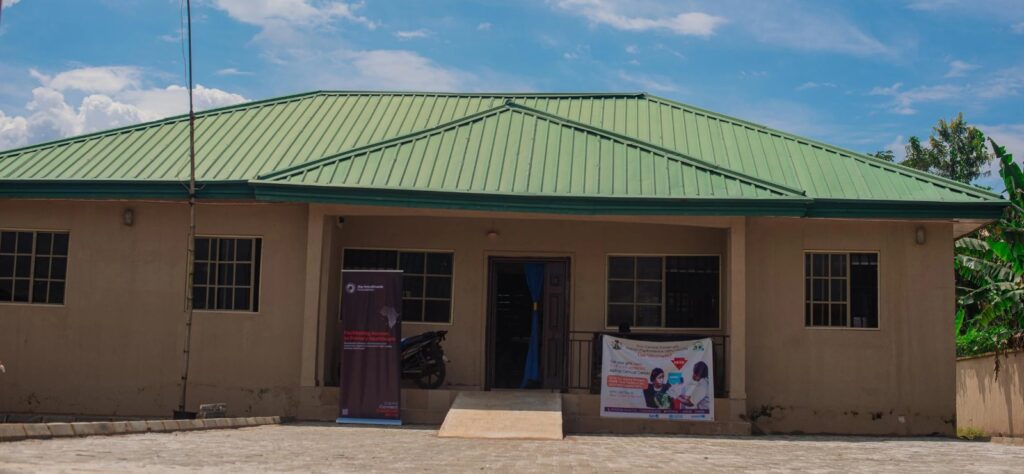By: Goodluck E. Adubazi, Abuja.
A Community Left Behind
Sabongida Ora, Edo State, Nestled among the rolling hills and farmlands of Atoruru in Owan West LGA, a quiet health crisis once gripped this rural community. The Atoruru Primary Health Care Centre (PHC), designed to serve over 16,000 people, had become a last resort—underequipped, underfunded, and unable to meet even the most basic health needs.
“We had no light, no water, no gloves—sometimes not even the will to come in,” recalls midwife Ivie Osaigbovo. Her haunting memory of delivering a child with only a mother-in-law’s assistance paints a bleak picture of maternal care in the region.
Healthcare Crisis in Numbers: Nigeria’s Maternal Mortality Struggles
Nigeria faces one of the world’s highest maternal mortality ratios (MMR), reaching 993 deaths per 100,000 live births in 2023. Children under five fare little better, with a mortality rate of 110 per 1,000. While Edo State has made strides—dropping to 277 per 100,000 for MMR and 19 for U5MR—communities like Atoruru remained largely untouched by progress.
From January to September 2024, the Atoruru PHC recorded as few as 0 antenatal visits in a month, no Intermittent Preventive Treatment (IPT) for pregnant women, and intermittent vaccine availability, leaving children and mothers dangerously exposed.
“We Had Nothing to Give”: Nurses Recall Rock Bottom
Nurse Ehiaghe Aigbogun doesn’t mince words: “Some months, we recorded zero ANC visits. Women knew we had nothing—no supplements, no malaria drugs, no reason for them to come.”
Vaccine stock-outs were frequent. Immunisation numbers were inconsistent, ranging from 0 to 12 per month. And in a malaria-prone zone, not a single Long-Lasting Insecticidal Net (LLIN) was distributed in all of 2024 before October.
Even the community’s elders noticed. “We had to take our children to other towns to survive malaria,” says Chief Osaro Idahosa.
Hope Arrives: Aig-Imoukhuede Foundation’s Lifesaving Intervention
In October 2024, a transformation began. Through the Adopt-a-Health Facility Programme (ADHFP) led by the Aig-Imoukhuede Foundation, Atoruru PHC received a much-needed rebirth.
New delivery beds, cold-chain vaccine storage, stocked shelves, and fresh paint were just the surface. What truly changed was the trust the community began to place in their local health centre again.
From Zero to Hero: Data Reveals Dramatic Turnaround
Antenatal visits: From near-zero to 9 monthly on average.
Childbirths at PHC: Rose from 0–4 per month to a consistent 4–6 births.
Immunisation rates: Skyrocketed to 48 fully immunised children in February 2025.
Malaria prevention: 32 IPT doses and 47 LLINs distributed by May 2025.
“I used to tell women not to bother coming,” says Nurse Aigbogun. “Now we run out of chairs on immunisation days.”
Voices of Change: ‘This Clinic Gave Us Our Baby Back’
For mothers like Blessing Osawe, the change is deeply personal. “With my first child, I barely made two antenatal visits. This time, I made all eight. They gave me supplements and treated malaria—every month.”
Eghosa, a mother who once ignored the clinic, now rushes in at the first cough. “Before, there were no drugs. Now they test, treat, and give me what I need right away.”
Rebuilding Trust, One Visit at a Time
Outreach sessions that used to attract a handful of villagers now draw crowds. “We planned for 20 people. Over 80 came,” laughs health worker Osayande.
This growing trust is reinforcing a feedback loop: More patients mean more data, more supplies, and even more trust.
Atoruru PHC: From Broken Walls to Beacon of Hope
Nurse Aigbogun reflects as she fills in the now-busy ANC register: “Yesterday, a mother brought her newborn—just to show me. She said, ‘This child is here because of you.’ That’s when I knew—we’ve made it.”
The Atoruru PHC now stands as a model of what’s possible when investment meets local commitment.
“This place used to be where hope came to die,” says Eghosa. “Now, it’s where hope is born.”
A Model for Nigeria’s Healthcare Future
In a nation where too many rural clinics remain forgotten, Atoruru shows what is possible when communities are empowered, and resources are provided.
The Aig-Imoukhuede Foundation didn’t just fix a building—they restored a community’s right to health.

